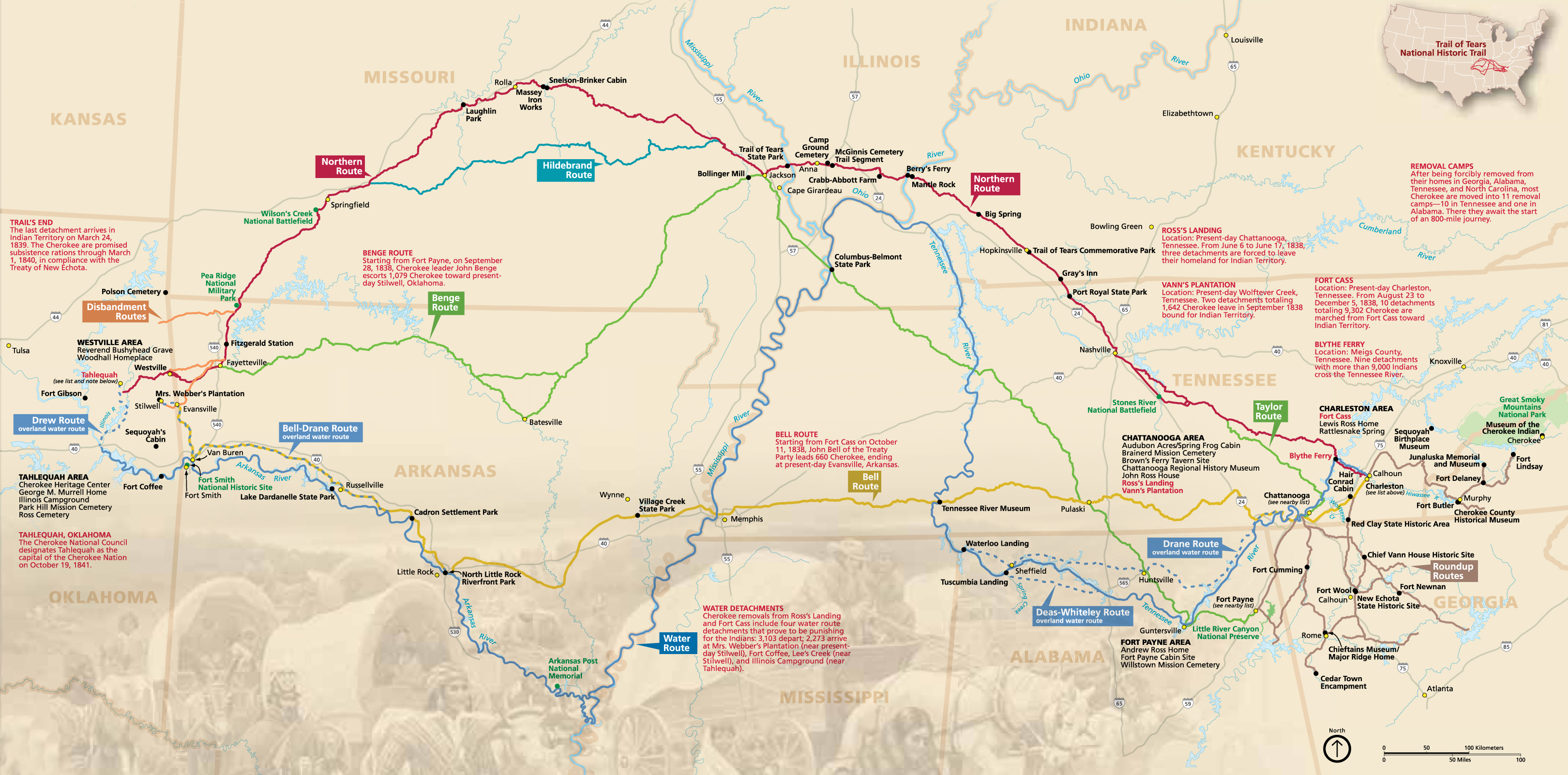In Their Own Words
This website began in the summer of 2018 as a public history project to provide a forum for the thousands of Cherokees who were removed from the Cherokee Nation in the Southeastern United States in the summer of 1838. The Cherokees who were forcibly removed from their homeland can now publicly tell their own story, using their own words, which are recorded in the claims they filed against the U.S. government in 1842 and in other documents of the time period. This project is meant to serve as a corrective to the common misperception that the Cherokees did not record many first-hand accounts of what happened to them when they were removed, first by squatters and opportunists, and later by federal and state soldiers. In truth the details of their hardships were painstakingly documented as they struggled, much of the time in vain, to get restitution for their many losses.
The site is organized by local community since this is how the Cherokee people themselves contextualized these losses.
For more detailed contextual information about the Trail of Tears and the Georgia round-up, as well as information about the National Historic Trail that memorializes it, please visit the Funk Heritage Center at Reinhardt University in Waleska, Georgia, which manages this website, or any of the growing number of certified sites along the Trail corridor.
W. Jeff Bishop, director, Funk Heritage Center, Reinhardt University
(The original claims are located at the Tennessee State Library and Archives, Nashville, Tennessee.)
Additional sites and resources:
Myths of the Cherokee.The Appalachian Summit, an online documentary history of the Southern Appalachians.
The Cherokee Phoenix newspaper, digitized by the Hunter Library, Western Carolina University.
The 1835 Census of the Cherokee Nation.
Newspaper accounts of the Trail of Tears, from the Sequoyah National Research Center in Little Rock, Arkansas.
Eyewitness accounts of the Trail of Tears, as digitized by the Sequoyah National Research Center.
The Rev. Daniel Butrick Journal, an excerpt from a daily diary of travelers in the Richard Taylor Detachment.
The Autobiography of William Jasper Cotter, eyewitness to the Cherokee Removal.
The eyewitness account of missionary Evan Jones.
Letters written during the Trail of Tears, digitized by the Sequoyah National Research Center.
A brief history of the Trail of Tears, as related by the Cherokee Nation.
Research projects done through the National Park Service Cooperative Cost Share Challenge Grant program.
Certified Sites to visit on the Trail of Tears National Historic Trail.
Other Trail of Tears-related sites to visit.

